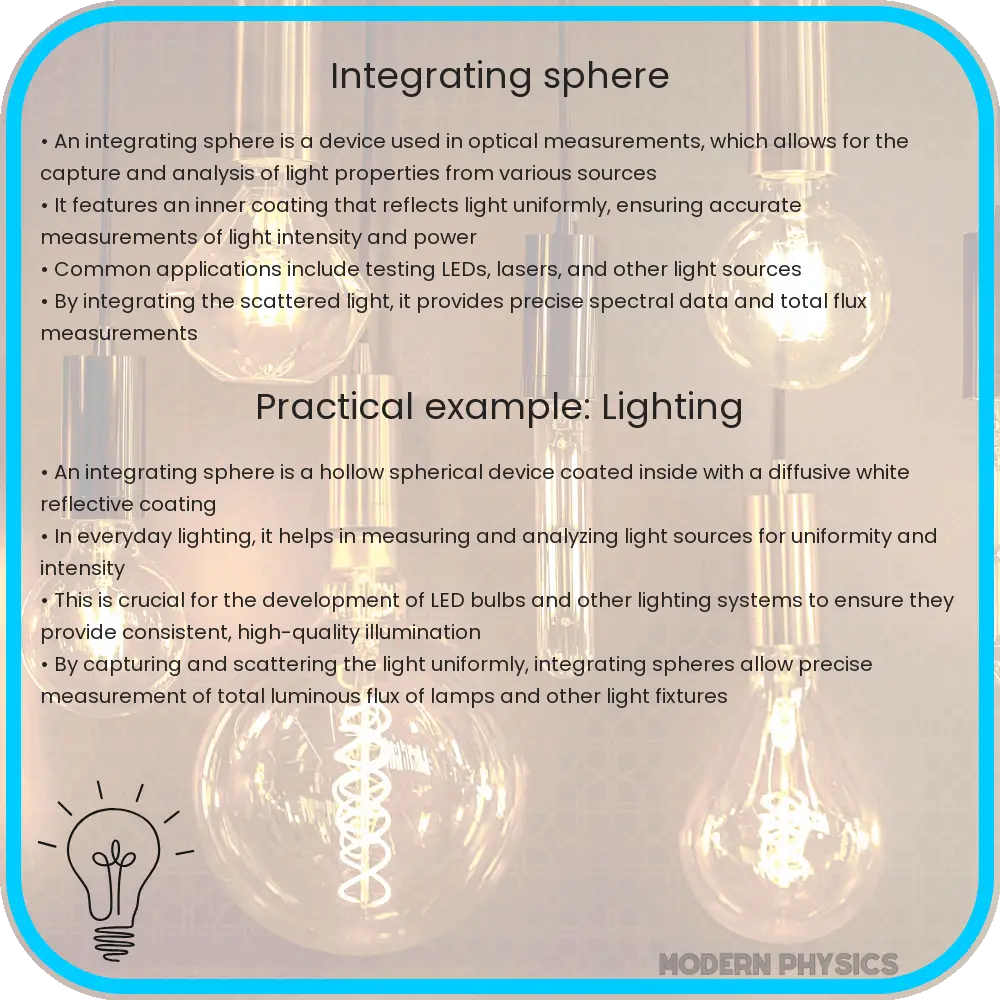An integrating sphere ensures optical accuracy, uniformity, and calibration in applications like light measurement, spectral analysis, and color calibration.

Integrating Sphere: Enhancing Optics Accuracy, Uniformity & Calibration
An integrating sphere is a crucial tool in optics, designed to ensure accuracy, uniformity, and proper calibration of optical systems. This spherical device is especially significant in applications such as light measurement, color calibration, and spectral analysis. Understanding how an integrating sphere functions and its importance can provide deeper insights into the fundamental principles of optical engineering.
What is an Integrating Sphere?
An integrating sphere is a hollow, spherical cavity with interior walls coated with a highly reflective diffuse material, typically made of barium sulfate (BaSO4) or Spectralon. These coatings ensure that light striking the walls is scattered uniformly in all directions. The main components of an integrating sphere include:
Working Principle
The core principle behind an integrating sphere is based on multiple scattering and diffusion. When light enters the sphere through the entrance port, it strikes the highly reflective walls and scatters in multiple directions. This process of scattering continues until the light is uniformly distributed throughout the cavity. Due to this scattering effect, any point on the inner surface of the sphere receives nearly the same amount of light, creating a uniform radiance. This characteristic is particularly valuable in applications requiring diffused and uniform light sources.
Applications in Optics
Integrating spheres find extensive use in various optical applications:
Factors Affecting Performance
The performance of an integrating sphere may be influenced by several factors:
To be continued…
Advantages of Using Integrating Spheres
Integrating spheres offer numerous advantages in optical measurements and device calibration:
Challenges and Limitations
Despite their many advantages, integrating spheres are not without challenges:
Conclusion
Integrating spheres are invaluable tools in the field of optics, providing a means to achieve accurate, consistent, and reliable light measurements. Their ability to diffuse light uniformly makes them essential in light measurement, reflectance and transmittance testing, optical instrument calibration, and color measurement. Understanding their working principles, advantages, and challenges is crucial for anyone involved in optical engineering or related fields.
By carefully maintaining and calibrating integrating spheres, engineers and scientists can leverage their benefits to enhance the accuracy and reliability of various optical systems. As the field of optics continues to evolve, integrating spheres will undoubtedly remain a fundamental component in achieving precise and dependable optical measurements.
